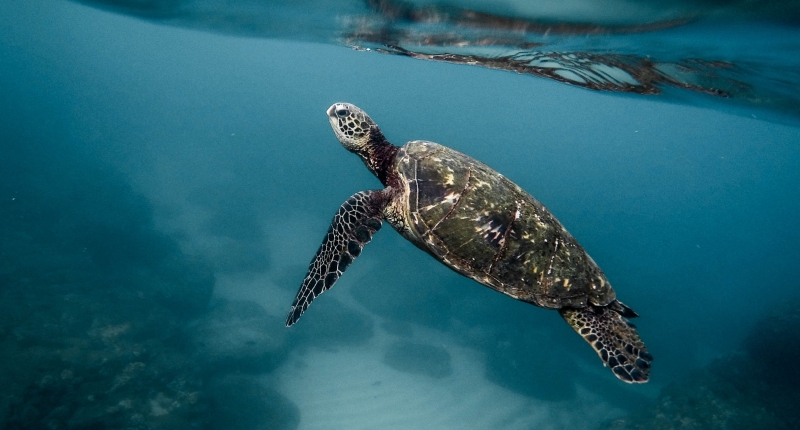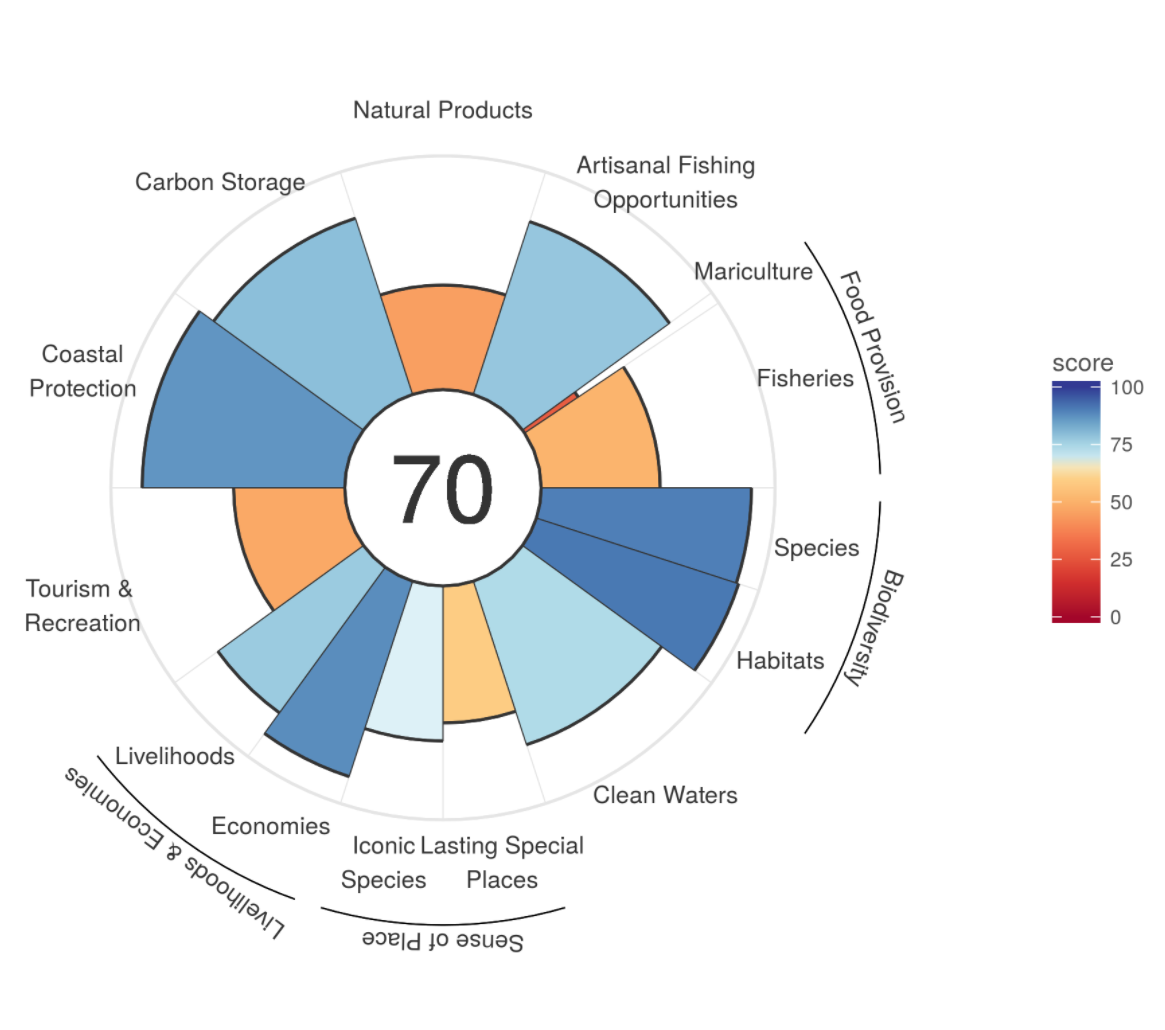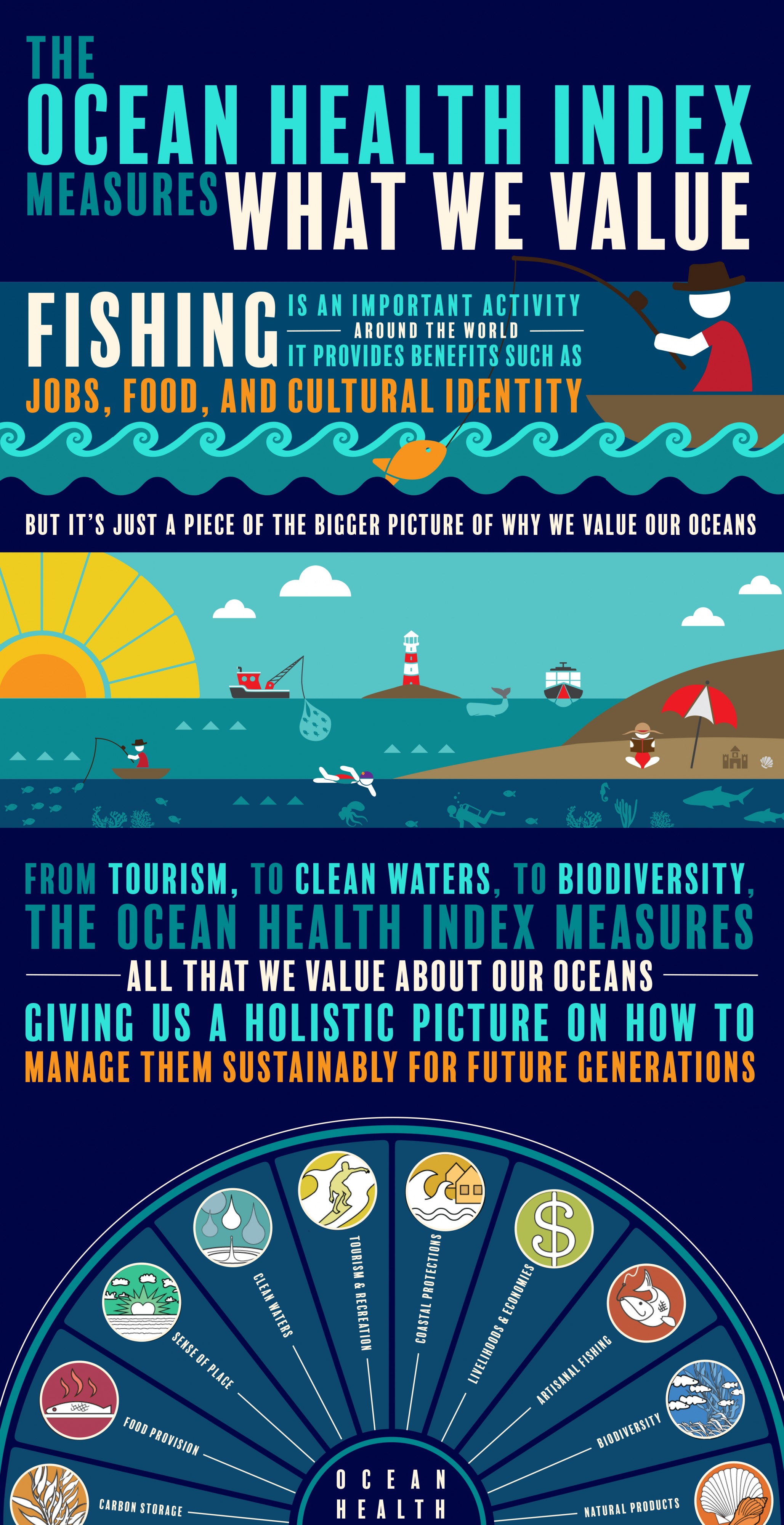Sixth Annual Assessment of Ocean Health Shows Relative Stability

Story modified from original version by Conservation International
This year’s results are in: the health of the world’s oceans is stable, but still a far cry from perfect.
The Ocean Health Index announced its sixth annual global assessment score – a 70 out of a possible 100 – at the 19th annual Global Environment Facility Large Marine Ecosystem meeting on November 30 in Cape Town, South Africa. While the 2017 score remains the same from 2016, it is roughly one point less than the global scores from 2012 through 2015.
Called the “Fitbit for oceans,” the Ocean Health Index is a tool developed by NCEAS and Conservation International to evaluate ocean health from regional to global scales, measuring the conditions of marine assets people care about, from clean water to fisheries to protected coastlines. These indicators can then inform global and regional policies for sustainably managing oceans.
 “Each year of scores gives us deeper insight into how the oceans are doing, where major challenges remain, and where success stories can offer lessons on how to improve ocean health in other parts of the world,” said lead scientist Ben Halpern, also the executive director of NCEAS. “You can’t manage well what you don’t measure, and the OHI provides a key tool for measuring the health of the ocean.”
“Each year of scores gives us deeper insight into how the oceans are doing, where major challenges remain, and where success stories can offer lessons on how to improve ocean health in other parts of the world,” said lead scientist Ben Halpern, also the executive director of NCEAS. “You can’t manage well what you don’t measure, and the OHI provides a key tool for measuring the health of the ocean.”
Despite the relative global stability, more individual countries have experienced a decline in regional ocean health since the first assessment in 2012 than those seeing improvement – 137 regions have decreased, while 82 have increased.
Among the highest scoring, at 80 or above, were remote islands with few or no human inhabitants, such as Christmas Island in the Indian Ocean and the South Georgia and South Sandwich Islands in the southern Atlantic Ocean. Germany was the only one of these 18 high scorers with a population that exceeds one million people.
At the other end of the bell curve were 12 regions with a 50 or below, including nine African nations and one each in Central America, the Middle East and the Balkans.
As observed in previous years, regions with stable and effective governance tend to score much higher than regions with chronic corruption, dictatorship, civil strife, war and poverty. Progress toward peace, justice, gender equality, social responsibility and other factors of civil health could make it easier for communities and nations to improve the environmental and economic conditions needed to boost ocean health.
The United Nations has proposed using the Ocean Health Index to further the 14th Sustainable Development Goal (SDG): Life Below Water, which encourages countries to use ecosystem-based approaches to manage, protect and restore marine and coastal ecosystems to achieve healthy and productive oceans.
“The global SDGs are aspirational, but organizing action around each will be challenging,” said Johanna Polsenberg, senior director of Ocean Governance and Policy for Conservation International. “The reality remains that SDGs are unlikely to succeed unless the governance challenges crucial to implementation are addressed. The OHI is designed to do just that.”
The Ocean Health Index scores, calculated every year since 2012, provide a measure of how well 220 countries and territories are sustainably managing our ocean resources. The Index calculates baseline scores for total ocean health and ten goals associated with the marine benefits humans enjoy: food provision, artisanal fishing opportunities, natural products, carbon storage, coastal protection, livelihoods and economies, tourism and recreation, sense of place, clean waters and biodiversity.

